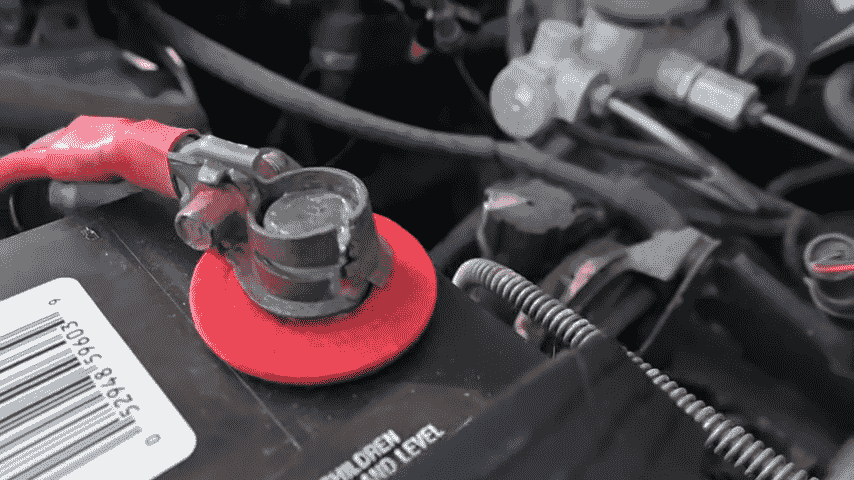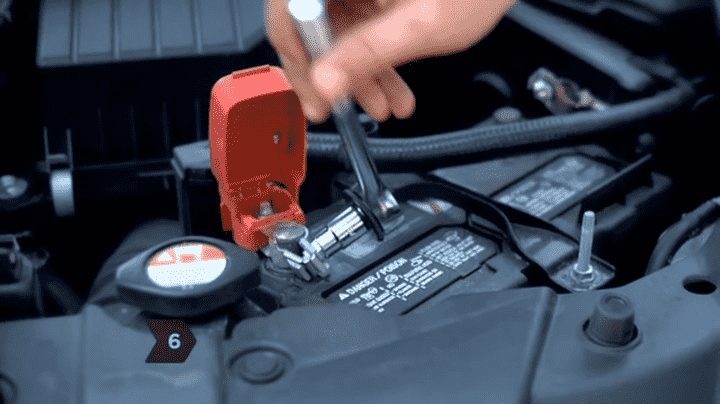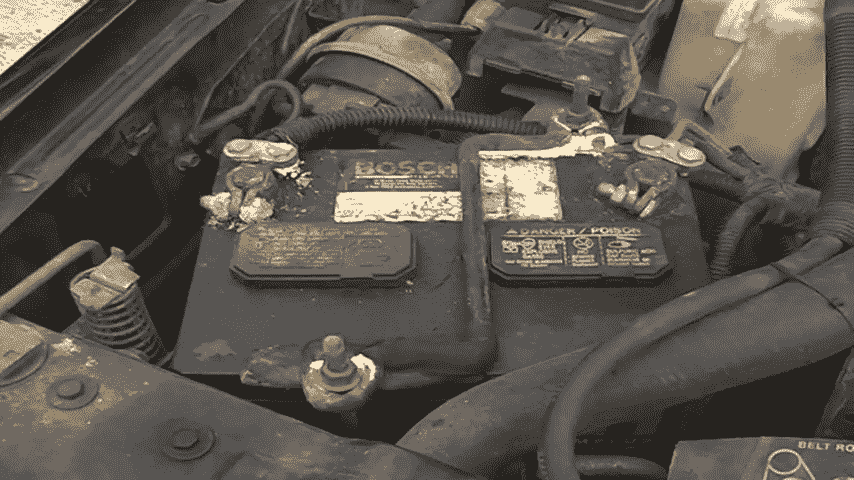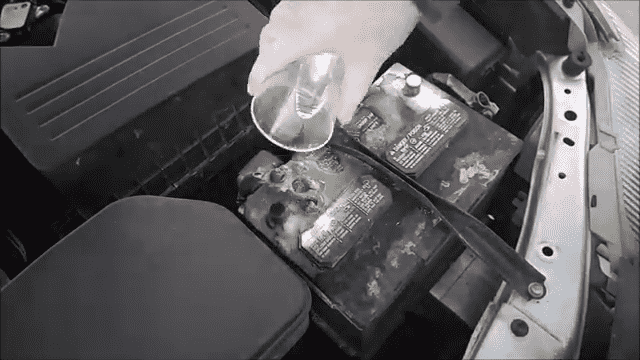The performance of car batteries is dependent on several factors, cleanliness being an essential factor when it comes to their terminal. For the experienced car owner as well as the first-time car owner, it’s an important skill to learn how to clean battery terminals. In this guide, you will learn all that is required of you if you clean the battery terminals, starting with its uses. Let’s dive in!
What Are Battery Terminals?

Battery terminals are those terminal points where battery cables are connected either to the battery or to the component that will be charged by the battery. These terminals are usually metallic and vital in transforming the current from the battery to the other electrical parts of your car.
Types of Battery Terminals
There are two main types of battery terminals:
- Top Post Terminals: These are found at the top of most car batteries; they are also known as posts.
- Side Post Terminals: These are seen on the side of the battery and are comparatively rare.
Signs Your Battery Terminals Need Cleaning
Difficulty Starting the Engine
Common symptoms that may include a problematic car engine, the inability to start the car or having to turn the key multiple times before the car starts, and clicking sounds that originate from the battery compartment are signs which may be indicative of the fact that the battery terminals require cleaning.
Visible Corrosion
It manifests as white powder on the terminal, caused by corrosion. If you are experiencing the buildup of the mentioned materials, you need to clean the terminals.
Electrical Issues
Fluorescent light that does not operate properly, problems with your radio, or other electrical difficulties can also point to issues with your batteries’ terminals.
Safety Precautions Before Cleaning
Necessary Safety Gear
To begin, it is recommended to put on safety goggles and gloves to guard oneself from flammable vapors and sparks.
Disconnecting the Battery

It is recommended that the first negative (–) terminal be removed before the positive (+) terminal is removed. This decreases the possibility of electric shock and short-circuiting of the battery by preventing certain terminals from coming into contact with each other.
Proper Ventilation
Clean in an area with good ventilation to minimize the chances of inhaling any fumes emitted during cleaning.
Tools and Materials Needed
List of Essential Tools
- Safety goggles and gloves
- Wrenches or pliers
- Wire brush
- Cleaning solution (baking soda and water or commercial cleaner)
- An old toothbrush or small brush
- Clean cloth or paper towels
Recommended Cleaning Solutions
You can use a simple mixture of baking soda and water or a commercial battery terminal cleaner. Both are effective at removing corrosion.
Step-by-Step Guide to Cleaning Battery Terminals

Step 1: Gather Your Supplies
Ensure that you have all the tools and materials listed above before you begin the project.
Step 2: Turn Off the Engine and Remove the Keys
Make sure the car is parked and off and the keys are not left in the ignition.
Step 3: Cut the Battery Cables
Starting with the negative (-) terminal, the process should be done by loosening the positive (+) terminal with the help of a wrench or pliers.
Step 4: Inspect the Terminals and Cables
Check whether the terminals and cables on the battery are compromised to the extent that they have to be replaced.
Step 5: Clean the Terminals with a Cleaning Solution
Wipe on the terminals with the cleaning solution of your choice. If baking soda is used, it should be in a paste because it is mixed with water.
Step 6: Scrub the Terminals with a Wire Brush
You can then use a wire brush to clean up the terminal, especially in areas that may have formed a layer of corrosion or dirt.
Step 7: Rinse and Dry the Terminals
Clean water is used to wash the terminals, and any dirt or moisture is removed using a cloth or paper.
Step 8: Apply Anti-Corrosion Protection
It is recommended to use a small amount of petroleum jelly or a commercial anti-corrosive aerosol spray to the terminals to avoid further occurrence.
Step 9: Reconnect the Battery Cables
Connect the positive (+) terminal first; then connect the negative (-) terminal.
Step 10: Test the Battery
Turn on your car and check for any issues. If everything is working properly, you’re done!
Cleaning Battery Terminals with Baking Soda

Why Use Baking Soda?
Baking soda is a reasonably soft abrasive that removes the corrosion film from the terminal while not affecting the terminal walls. It is nonhazardous to humans and is easily procured.
Detailed Cleaning Procedure
- Add one tablespoon of baking soda to one cup of water to make a paste.
- Now, dip the toothbrush you have been using to apply toothpaste for the past several years into the paste and apply it on the terminals.
- Scrub the terminals thoroughly.
- After use, it is safe to rinse with clean water and then pat dry with a cloth.
Alternative Cleaning Methods
Using Vinegar
Vinegar can also be used to clean the terminals, which is an item that is easily found at home. Its solubility also comes from acidity, which enables it to dissolve the corrosion.
- It is suggested that vinegar be applied to the terminals.
- Leave it for some time to settle; 10-15 minutes should do the trick.
- Some of the brushing and washing techniques followed by the above methods include the use of a brush and washing with clean water.
Why Clean Battery Terminals?
Preventing Corrosion
There is always an accumulation of corrosion on the battery terminals due to a wrong connection, which can cause more harm to the battery. This means the terminals get contaminated, leading to poor connections; cleaning the terminals solves this problem.
Ensuring Optimal Performance
Cleaning the battery terminals guarantees the electrical system of the car gets the power it requires, thus boosting the battery’s performance and extending battery life.
Final Thought
The condition of terminals is important for the proper functioning of the car and for avoiding various problems. Concisely, with the simple steps outlined above in this guide, you should be able to clean the battery terminals and have your vehicle running efficiently. It’s worth reminding you that in order to have a healthy battery, it needs to be maintained and inspected regularly.
FAQs About Cleaning Battery Terminals
How Often Should I Clean My Battery Terminals?
It’s a good idea to clean your battery terminals every six months or whenever you notice signs of corrosion.
Can Corrosion Damage My Battery?
Yes, corrosion can damage the battery and reduce its lifespan. Regular cleaning helps prevent this.
What If My Battery Terminals Keep Corroding?
If you notice frequent corrosion, it may be due to a battery leak or other issues. Consider having your battery and charging system checked by a professional.
Is It Safe to Drive with Corroded Battery Terminals?
Driving with corroded terminals can lead to electrical problems and difficulty starting your car. It’s best to clean them as soon as possible.
What Should I Do If My Car Won’t Start After Cleaning the Terminals?
Double-check that the terminals are securely connected and free of corrosion. If the problem persists, your battery may need to be replaced.

